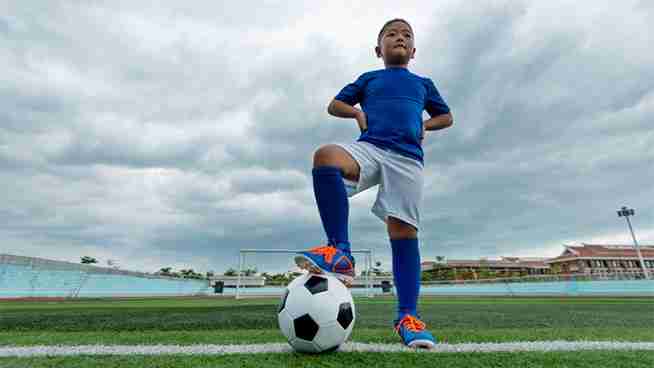Early specialization is one of the hottest topics in youth sports, and for good reason.
More often than not, kids who play soccer rarely get time off and don’t have a real offseason to recover. There’s fall, winter, spring and now even summer football. Not taking a season off can be disastrous for a child’s physical health.
Worse yet, youth soccer schedules are becoming more and more strict, resulting in kids not having time to dedicate a personal life to extracurricular activities other than their sport. This makes the mental part just as problematic as the physical part.
With the shift away from youth soccer and increasing injury rates, coaches and parents are debating whether or not children should focus on one sport from a young age (for the sake of this article, before the age of 12).
While addressing these issues is critical, before we demonize early specialization, we need to examine all of its components. This is a multi-layered topic that needs to be studied before we can determine whether it is “good” or “bad” for children.
That said, there are two sides to the early specialization story. Let’s first look at when it can be beneficial rather than detrimental.
When early specialization is acceptable
Here’s a specific case to consider: some children may have a huge passion for soccer and simply don’t want to participate in any other sport. If a child has a love interest, I’m not sure we should force them to sign up for other sports. This is a rare phenomenon, but one that cannot be neglected.
But we know that playing just one sport year-round at an early age can increase the risk of overuse injuries. The solution? Encourage the single-sport athlete to participate in movements outside of football, even if it is not another organized sport. It’s possible to learn a diverse menu of motor skills through outdoor play on playgrounds, basketball courts, hills, trees and more. I would say exploring the outdoors is a great addition to a rigid soccer schedule. As long as a child moves in a way that promotes balance, coordination and spatial awareness, it’s a win.
Another solution is to ensure they receive proper training from a strength and conditioning professional. More often than not, early specialists are prone to overuse injuries, so making sure these kids build up their strength to reduce this risk will be very helpful. If a child is working with a qualified strength coach, they should be exposed to a variety of movements in all planes of motion, such as lunge variations, pull-ups, push-ups, hip hinge variations, etc.
Why early diversification has great benefits
Early diversification is the antithesis of early specialization, where young athletes participate in multiple sports. Enrolling in sports besides football is beneficial for several reasons:
- Improved development of motor skills
- Increased exposure to a variety of movement patterns
- Improved cognitive development
- Increased exposure to new personalities and coaching styles
- Increased exposure to new tactics
- Reduced risk of overuse injury
As an example, lacrosse has a ton of benefits to offer a football athlete, such as anaerobic endurance, spontaneous tactical decision making, 1-on-1 problem solving (faking, cutting, maneuvering), and the development of speed and change of direction.
Lacrosse also offers new moves that a soccer athlete can’t get from football, such as more upper body strength, rotational power, and dodging ability.
While this sounds wonderful to the football athlete, there may be a caveat: playing football and lacrosse in the same season. Certainly, the benefits of early diversification cannot be maximized if a child is overburdened by the physical and mental wear and tear of practice two sports simultaneously. This can lead to chronic overuse injuries over time, and a busy schedule can make the athlete more susceptible to burnout.
So what is the solution ?
The optimal solution is to play sports whose seasons do not overlap. Not only does this alleviate the chronic loading problem, but a football player will return with increased enthusiasm for the sport and be ready to hit the ground running when they return to the field. And I promise you, one absence from football (2-3 months) will not make a child’s skills suddenly disappear.
If a child plays two sports in the same season, coaches and parents should ensure they have adequate recovery days during that time (1-2 per week) to work on their mobility and flexibility. Additionally, exposure to strength training will also be beneficial in this scenario, so that children are more resilient to demanding play and training programs.
So what do you think? Is early specialization beneficial for young footballers?
Before jumping to conclusions, we must consider a large number of factors.
Does the child even want to play football? If they only play one sport, can they diversify their movements in other ways?
Or, if they want to play two or more sports, can they do so in a way that the sports do not overlap during the season?
We must keep the child’s interests and needs in mind and manage accordingly. The good news is that no matter what the young athlete chooses, there are healthy ways to make things work and boost their development at the same time.
Photo credit: djedzura/iStock
LEARN MORE:
